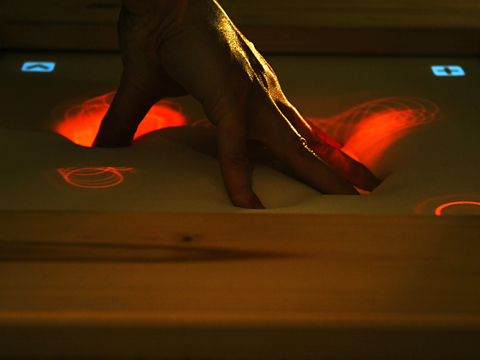
Exploring Hapticity: The Impact of Tactile Experiences on Students' Learning and Development
This paper explores the impact of tactile experiences on student learning and development. By combining research on the use of haptic technology and the effects of body-based interventions, this review will draw connections between the physical, cognitive, and emotional domains and will illustrate the capabilities of haptic technology to increase students’ engagement and understanding while creating meaningful learning opportunities. The review will provide an overview of the effects of tactile experiences on cognition, motivation, emotion, and behavior and will summarize current research in touch-based technology and its potential to enhance student learning. Furthermore, this paper recommends future directions for research to further deepen our understanding of the power of tactile interventions on student learning and development.
Understanding the Concept of Hapticity
Hapticity refers to the nature and perception of tactile experiences. It comes from the Greek word 'haptikos,' meaning pertaining to the sense of touch. In education, hapticity emphasizes the importance of hands-on experiences that engage students physically, complementing visual and auditory learning methods. Through touching and manipulating physical objects, students can deepen their understanding of the material and enhance their overall learning experience.Examples of haptic learning activities in the classroom include exploring properties of materials, building models, and performing experiments.
Hapticity plays an important role in cognitive development, as it allows students to construct knowledge through tangible experiences as opposed to simply relying on abstract ideas. Tactile information helps the brain fill in gaps in knowledge and enables children to understand the structure of a concept. In this way, haptic learning is not only stimulating, but an essential tool for educators to aid in the development of critical thinking skills.
Haptic Learning: A Cognitive Enrichment
Haptic learning, or learning through touch, contributes significantly to cognitive development and understanding. It allows learners to interact physically with the subject matter, which can result in a more profound and intuitive understanding of complex concepts.
For example, in a physics class, students could manipulate a physical model of a lever to understand the principles of mechanical advantage. In geography, tactile interaction with 3D topographical maps can provide a more vivid understanding of landforms than flat images can offer.
Exploring Hapticity: The Impact of Tactile Experiences on Students' Learning and Development
This paper explores the impact of tactile experiences on student learning and development. By combining research on the use of haptic technology and the effects of body-based interventions, this review will draw connections between the physical, cognitive, and emotional domains and will illustrate the capabilities of haptic technology to increase students’ engagement and understanding while creating meaningful learning opportunities.
The review will provide an overview of the effects of tactile experiences on cognition, motivation, emotion, and behavior and will summarize current research in touch-based technology and its potential to enhance student learning. Furthermore, this paper recommends future directions for research to further deepen our understanding of the power of tactile interventions on student learning and development. To learn more about haptic technology, visit https://www.advancedwriters.com/custom-essay.html.
Incorporating Hapticity in Education
There are numerous ways to incorporate hapticity into education. Science labs, art projects, and vocational training are obvious examples, but even in less hands-on subjects, there's room for tactile experiences. History lessons could involve handling replicas of historical artifacts, while math classes could use physical models to illustrate geometric concepts.
In addition, technology offers new possibilities for haptic learning. For instance, haptic technology can simulate tactile feedback in virtual environments, allowing students to 'touch' and interact with digital objects.Haptic feedback can also be used for remote learning and remote laboratory experiments.
Finally, educators can also use hapticity as a way to make lessons more engaging and memorable. By providing students with tactile experiences related to specific topics or concepts, educators can make learning more enjoyable, while providing students with a better understanding and deeper connection to a particular subject.
Looking Ahead: The Future of Hapticity in Education
As we move towards a more holistic understanding of learning, the role of hapticity in education is likely to grow. The potential of haptic technology in particular is exciting. While still a developing field, it promises to enable even more diverse and immersive tactile experiences in future classrooms.
In conclusion, hapticity represents a valuable component of a balanced, multi-sensory educational approach. By engaging students' sense of touch, we can enrich their learning, cater to diverse learning styles, and ultimately, foster a more inclusive and effective educational environment.







